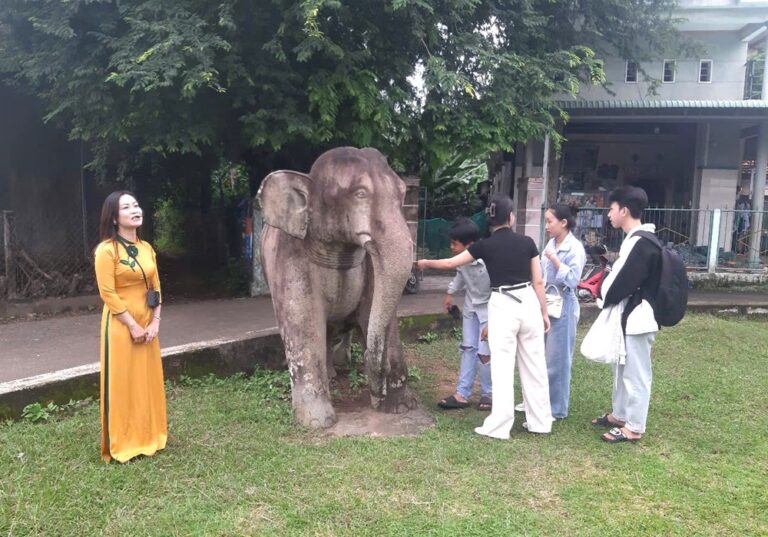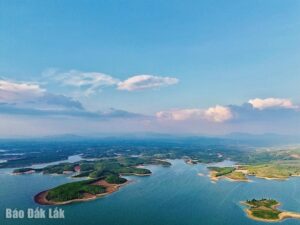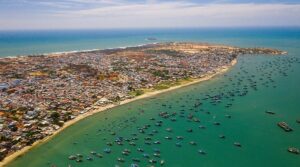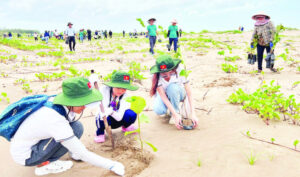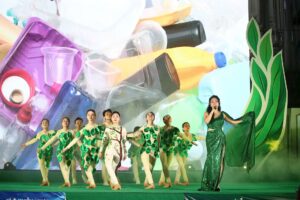Tram Chim National Park, in Tam Nong District of Dong Thap Province, has been recognized as the 2,000th Ramsar site of the world and the fourth of Vietnam by the Ramsar Convention – the International Union for Conservation of Nature (IUCN).
The Weekly interviews Nguyen Huu Thien, an ecologist with over 20 years of experience in conserving wetlands in the Mekong Delta.
Q: According to you, why has Tram Chim been certified as a Ramsar site of the world?
A: Tram Chim deserves the title of a Ramsar site as it meets eight of the nine criteria of the Ramsar Convention. In addition, BirdLife has also ranked Tram Chim among important bird areas in Vietnam. Today, the original scenes of Dong Thap Muoi have almost disappeared and only some important areas remain, such as Tram Chim in Dong Thap and Lang Sen in Long An. Conserving such remaining areas has multiple meanings in biodiversity, ecology, tourism, culture and scientific research.
What makes Tram Chim special compared with other Ramsar sites?
This is one of the last areas of Dong Thap Muoi, a wild wetland covering nearly one million hectares, stretching from Dong Thap to Tien Giang and Long An provinces. Dong Thap Muoi in the old days was a paradise of several fauna species, including crocodiles and monkeys. Many places in the old Dong Thap Muoi remind this image of wilderness such as Bung Sau Hi (a swamp with many crocodiles), Ca Dam Canal and Lam Vo Hill, which were named after the trees that are scarce now. The meadow of Tram Chim is a sight that is hardly seen elsewhere in the Mekong River basin. In addition, the wild rice fields in Tram Chim are the biggest growing area of this rice strain that still remains in the Mekong Delta. In particular, in the dry season every year, from January when the water level in the field begins to go down until the beginning of the rainy season in late May, Tram Chim welcomes a colony of Sarus cranes coming here to live.
What is the benefit for Tram Chim when it has become a Ramsar site?
Being certified as a Ramsar site is a good opportunity for preserving the wetland in Tram Chim. The first advantage for a Ramsar-certified wetland of international importance is that the name of that area and even of the country will be better known as it is mentioned more at international forums on conserving and using wetlands wisely. Tram Chim is recognized as the 2,000th Ramsar site of the world, and this very figure will also attract a special attention to Tram Chim. In addition, when becoming a Ramsar site, Tram Chim will have opportunities to receive support from experts as well as to apply internationally recognized standards.
What problems in Tram Chim do you think scientists have helped deal with?
Over the past few years, Tram Chim National Park has received support from many individuals, agencies and organizations at home and abroad such as National University of Hanoi, Can Tho University, HCMC University of Natural Sciences, International Crane Foundation (ICF), IUCN, World Wild Fund for Nature (WWF) and many local and foreign experts. Thanks to that, we have managed to settle important issues threatening the ecosystem of Tram Chim, the most important of which was the successful experimentation of managing water appropriately, maintaining the two-season hydrological regime in compliance with the natural principles of Dong Thap Muoi. Local people have also grouped to use resources controllably inside the national park.
Scientists seem to be concerned about the water in Tram Chim, don’t they?
The biggest threat for the Tram Chim ecosystem is that dikes around Tram Chim are too high. These dikes were raised in 2003 to 4-5 meters over the ground in order to store water all year round inside Tram Chim to prevent fires. The system of low dikes with the height of about two meters around Tram Chim like before 2003 is necessary to maintain the suitable humidity, making up for the amount of evaporated water from the surface and leaves, and the absorbance in the dry season. In the context of hydrologic changes in Dong Thap Muoi, if there is not a system of surrounding low dikes, the water level will drop to about 1.5-2 meters below the earth surface in the dry season and the plants and weeds will wither and die. The system of low dikes like those before 2003 still allows floodwater to overflow it. However, since the system was hightened, Tram Chim has been isolated from the outside environment.
As floodwater cannot overflow the dikes, fish eggs and fry from the Mekong River can only enter Tram Chim in small quantities through the openings of floodgates. The decrease in fish results in the decrease in waterfowls due to the lack of feed.
The solution to this problem is probably to lower some sections of the dikes or build dams for water to overflow in the flood season to bring in fish eggs and fry, and create conditions for the vegetation waste inside to disintegrate better to improve the water environment and reduce the risk of fires. We should also note that a small number of annual fires are necessary for the wetland of Tram Chim.



